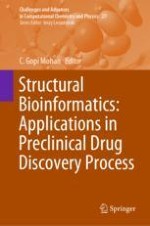2019 | OriginalPaper | Chapter
Integrated Chemoinformatics Approaches Toward Epigenetic Drug Discovery
Authors : Saurabh Loharch, Vikrant Karmahapatra, Pawan Gupta, Rethi Madathil, Raman Parkesh
Published in: Structural Bioinformatics: Applications in Preclinical Drug Discovery Process
Publisher: Springer International Publishing
Activate our intelligent search to find suitable subject content or patents.
Select sections of text to find matching patents with Artificial Intelligence. powered by
Select sections of text to find additional relevant content using AI-assisted search. powered by
